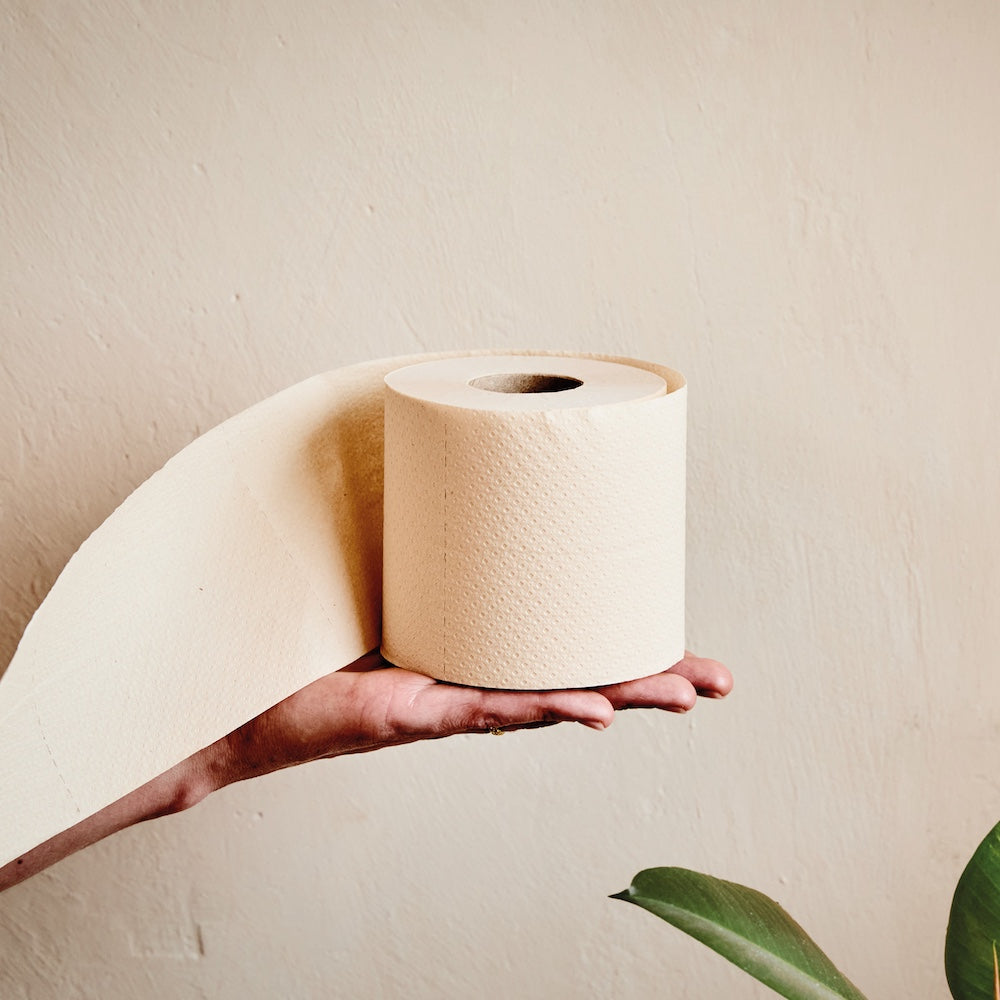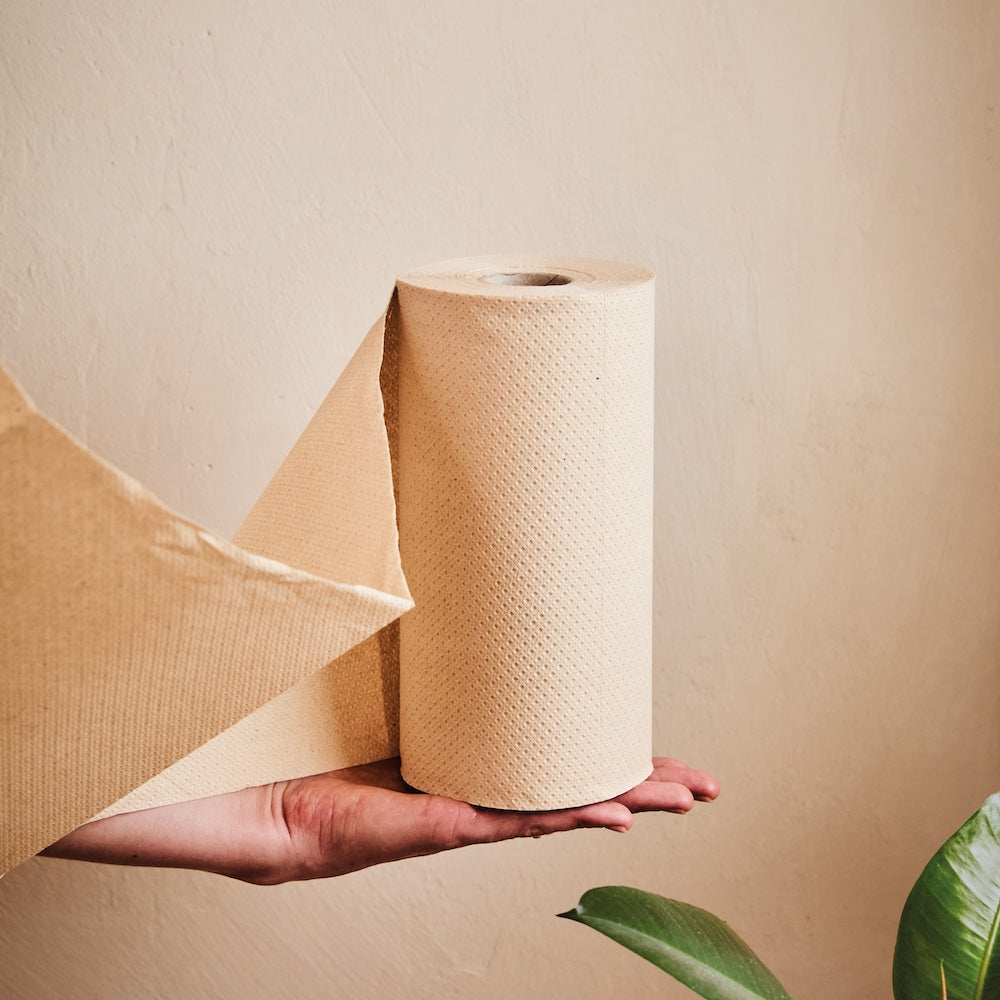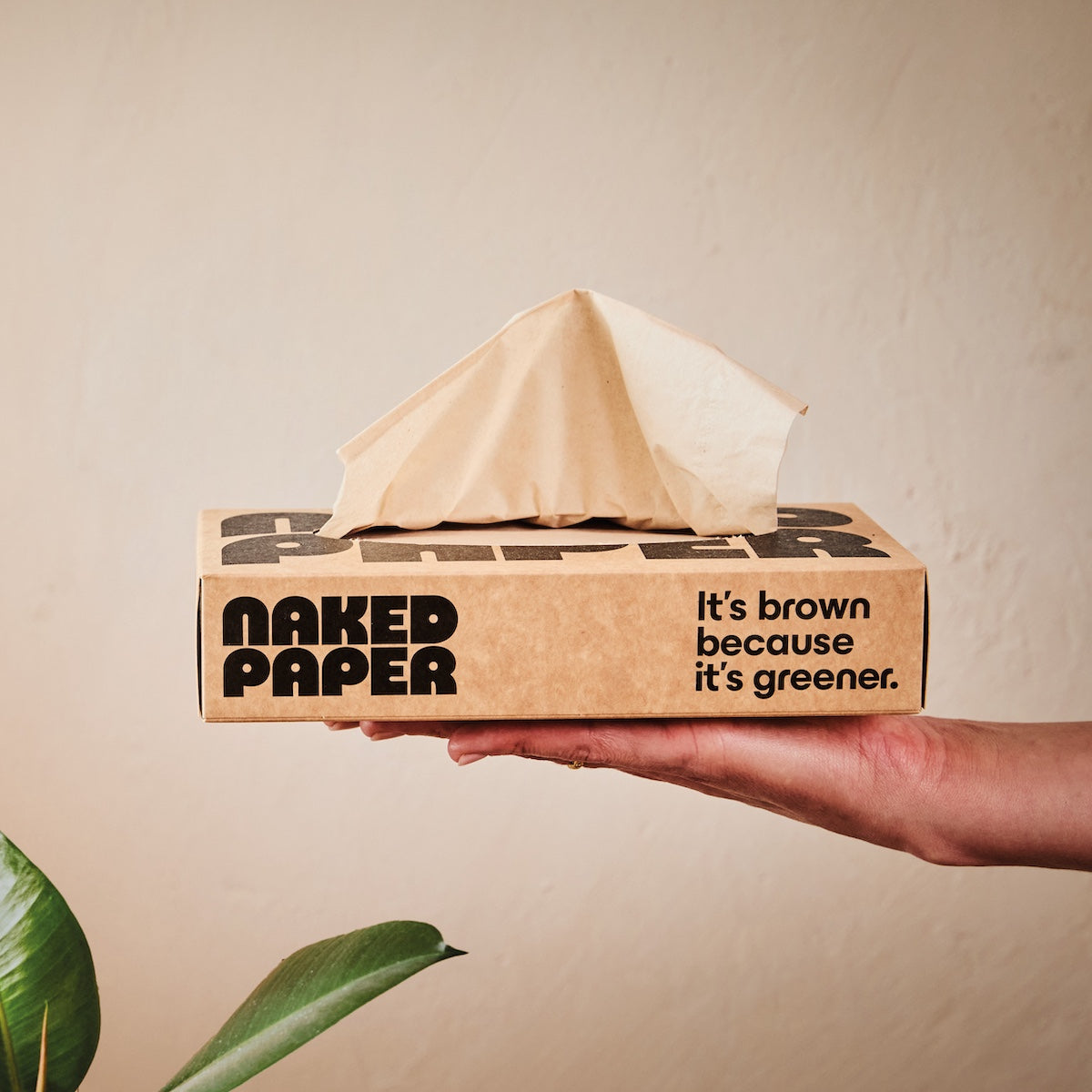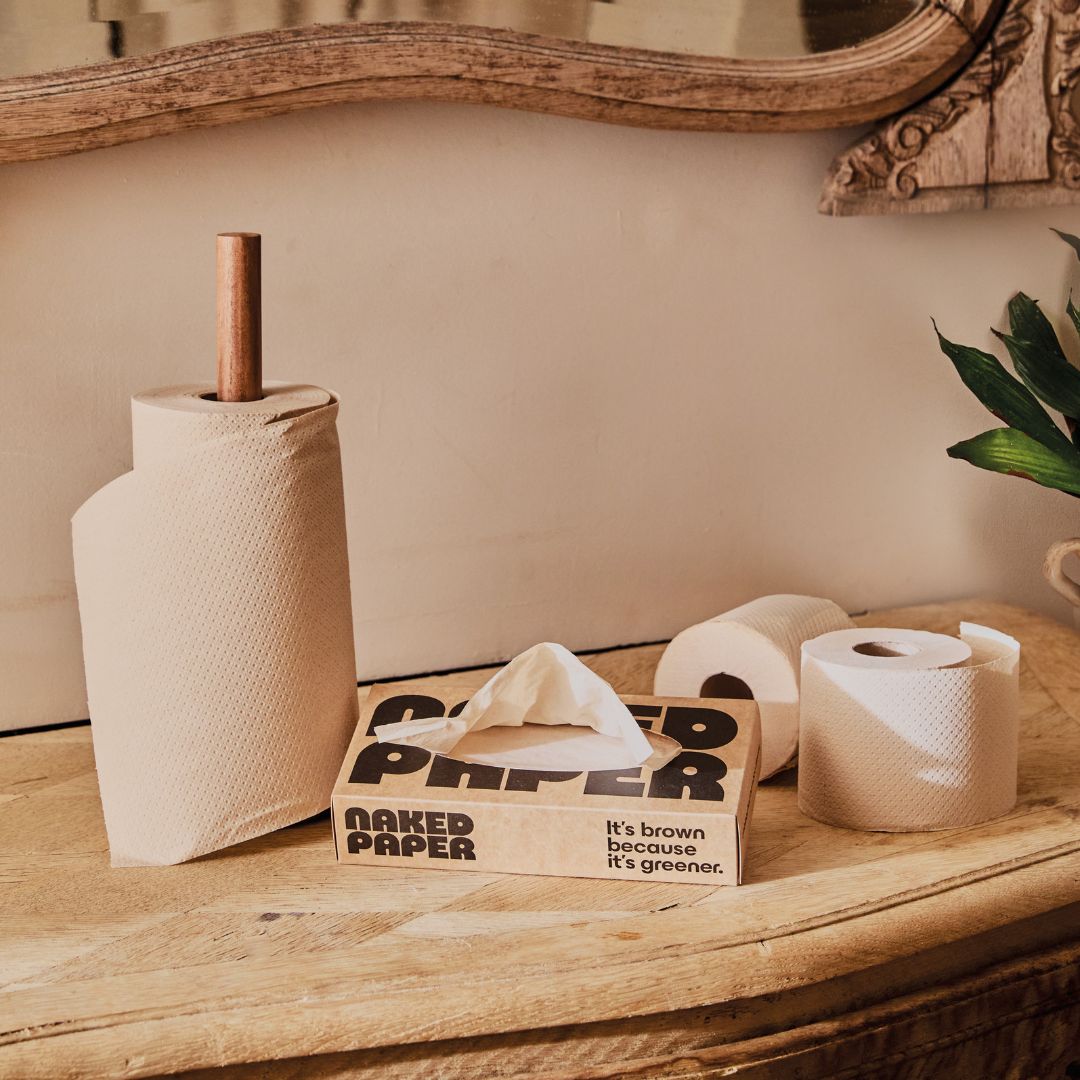What is toilet paper made from?

Toilet paper is one of those everyday items we rarely think about. We buy it, we use it, we replace it (hopefully on before we run out) and we move on.
But with many of us growing more curious about the ingredients in daily-use products, and some toilet paper making the headlines for all the wrong reasons, we thought we’d take a closer look. What is toilet paper made from?
Of course, when it comes to our own products, we have all the facts to hand. But we'll start with the general ingredients you'll find in many standard rolls.

What is standard toilet paper made from
Most conventional toilet paper is made from trees. Toilet roll manufacturers often opt for a mix of softwood and hardwood trees. Softwoods like pine and fir have long fibres that make the paper strong. Hardwoods like oak and maple have shorter fibres that make it softer. Combining the two makes the final tissue strong and comfortable to use.
What about toilet paper made without trees? Up until recently, the best-known alternative to traditional timber sources was recycled paper. For this, manufacturers take consumer paper products, like office printer paper or newspapers, sort them, bleach them, and pulp them, before turning them into toilet paper.
Recycling waste materials promotes a more circular economy than using virgin trees, but manufacturers using standard sources of recycled paper depend heavily on bleach. Without bleach, the printed documents, leaflets, and receipts they use would create a final product that was an unappealing grey colour.
So that's the raw materials and the colour. Anything else we should flag?
We think so. Firstly, toilet paper will usually be made with more than one ply, and an adhesive is used to bind these thin sheets together. Often this is derived from gelatine, meaning that standard toilet rolls and other tissue products aren't always vegan-friendly.
Beyond the glue, some manufacturers turn to harsh chemicals like formaldehyde to make their sheets extra durable while being soft and fluffy, and there's also "forever chemicals" or PFAS to think about. We've written about PFAS in a previous article but in brief these are highly durable chemical compounds that pose serious risks to human (not to mention animal) health, and have been found in many big toilet paper brands.
Between the trees and the bleach, the damaging chemicals and the glue, traditional toilet paper production often has an outsized impact on the environment. If you consider the fact that the average person in the UK uses 127 rolls per year, it adds up quickly.

What is Naked Paper made from
At Naked Paper, we look for ways to improve on the standard, with everyday tissue products made from raw materials that renew without fuss, and can be processed without bleach.
Our bamboo toilet paper comes from China, where it grows naturally, without pesticides, in vast forests. Unlike trees, bamboo regrows from the root, so it doesn’t need to be replanted after it’s harvested. And when we say “regrows from the root,” we’re talking fast. Some species of bamboo grow up to three feet in a single day.
After harvesting, the bamboo comes by sea to our factory in the compact form of dehydrated blocks of raw pulp.
We also make unbleached recycled toilet paper, using discarded packaging cardboard and paper collected within 85km of our factory, much of it coming from local supermarkets in the Girona region. This is sorted in our state-of-the-art recycling centre, filtered, and cleaned.
The soaps and salts we use to decompose and wash our pulp meet REACH regulation standards; meaning they're non-toxic and essentially neutral in their environmental impact. You can find out more about the nitty gritty of how we clean our pulp here.
We bind our plys using an adhesive derived from pine sap, and we don’t wrap our rolls in dyed paper or plastic. We end up with bleach-free tissue packed in cardboard boxes, manufactured with renewable energy and no fossil fuels.
Our simple processes are so clean that the water we’ve used to make our pulp can be returned to the river with no damage to the existing ecosystem, confirmed by regular testing. We've also had both our bamboo and recycled toilet paper independently tested, and they have been found free of PFAS.

What other things can you use to make toilet paper
Bamboo and recycled cardboard are great, renewable materials. But we’re always looking at what’s next. Here are a few potential raw materials we’ve got our eye on:
-
Straw: After crops like wheat or barley are harvested, the leftover stalks (straw) often go to waste. But straw is rich in cellulose, the main ingredient needed for making paper. Straw is also a byproduct of farming, so making use of it for tissue production would work from a circular economy point of view as well.
-
Hemp: Hemp has been used for centuries to make everything from rope to clothing to paper. It’s fast-growing, requires little water, and like bamboo it doesn’t need chemical fertilisers or pesticides. Some of the first-ever paper was made from hemp, so we’d be on solid footing with this one.
-
Stinging nettles: Yes, nettle toilet paper. We know. But nettles grow in abundance across Europe, require no special care, and have long fibres that could work well for paper. So far, unlike straw and hemp, there aren’t any companies (that we could find) using stinging nettles for their toilet paper. But you can’t deny it’s an attention-grabbing idea.
Good toilet paper with better ingredients
Raw materials are a hot topic for eco-friendly manufacturing. Fresh ideas for simpler ways to make things (as well as package and transport them) are being developed all over the world.
Who knows? In a few years, we could be unveiling the world’s first bleach-free toilet paper made from stinging nettles.
(We promise we’ll test it thoroughly first)
For now, our bamboo and recycled toilet rolls help to protect trees, conserve water, and reduce climate emissions. They contain no bleach, no PFAS, no BPA, and no plastic. Just simple, soft, straightforward tissue.
Interested to try Naked Paper?





